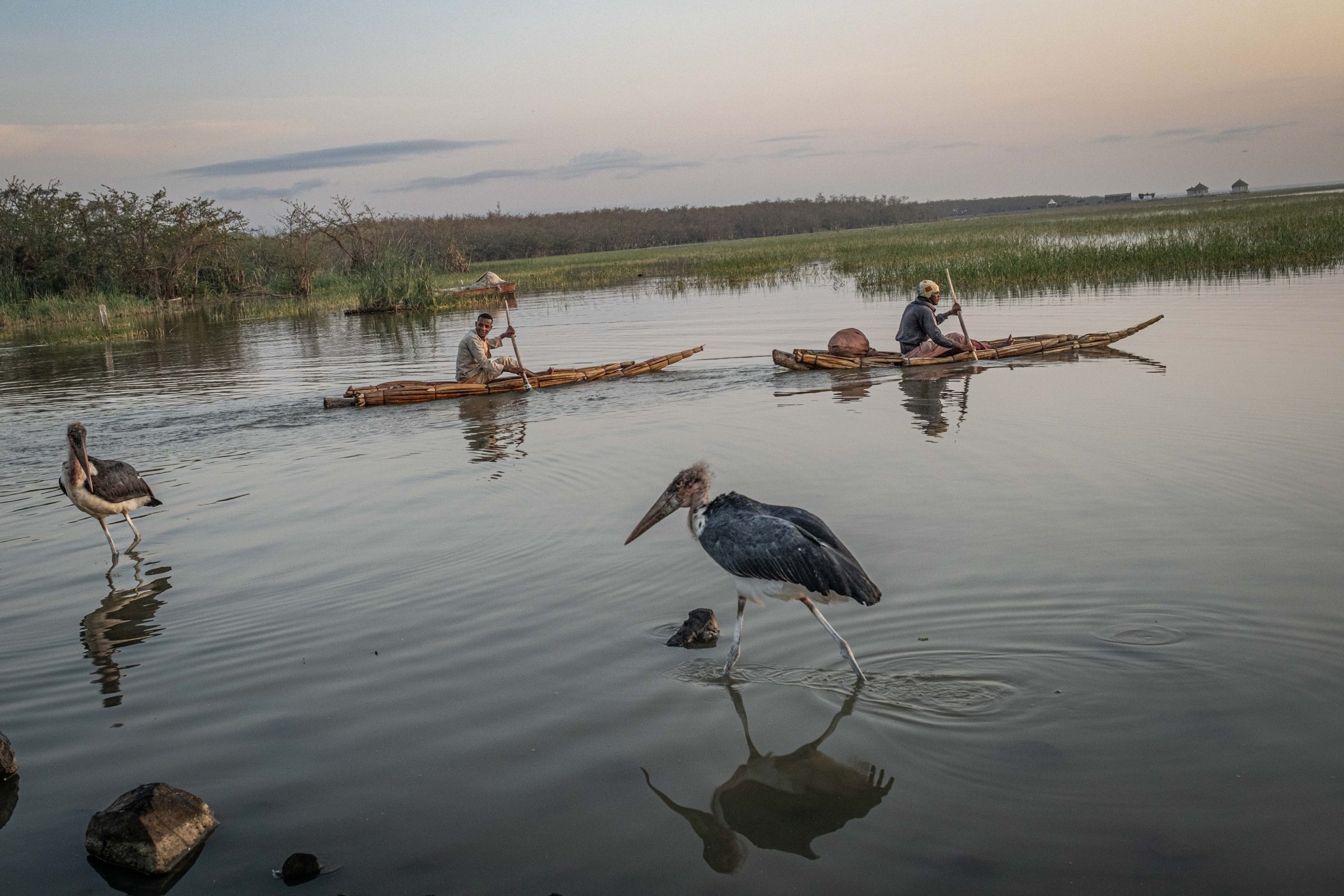Ethiopia 2025 – AFP
Lake Dambal is a vital freshwater source in Ethiopia’s Rift Valley, supporting local fishing communities and agriculture. But the lake is in crisis. Years of unregulated water extraction for irrigation, combined with the heavy use of fertilizers and pesticides in surrounding farmland, have led to increasing pollution levels. Chemical runoff has encouraged the spread of invasive water hyacinth, which now chokes large areas of the lake and threatens aquatic life by reducing oxygen levels.
Deforestation in nearby highlands has caused sediment to accumulate in the lake, while rising temperatures and erratic rainfall—driven by the climate crisis—have accelerated its degradation. The water level has dropped significantly in recent years.
The artisanal fishing sector, which sustains many families, is among the hardest hit: fish stocks have declined sharply, making it increasingly difficult to make a living from the lake. At the same time, the widespread use of agrochemicals and their presence in the lake pose serious public health risks for communities relying on its water for daily use.
Additional pressure comes from large-scale flower farms, particularly those owned by the Dutch company Sher, which extract vast amounts of water to supply European markets. Along the lake’s edge, water is pumped and transported without regulation, further straining the ecosystem.
Amid growing concern, efforts to safeguard Lake Dambal continue. Desalegn Regassa of Wetlands International warns that if current trends are not reversed, this essential Ethiopian lake could one day disappear—or become too polluted and degraded to sustain life.































